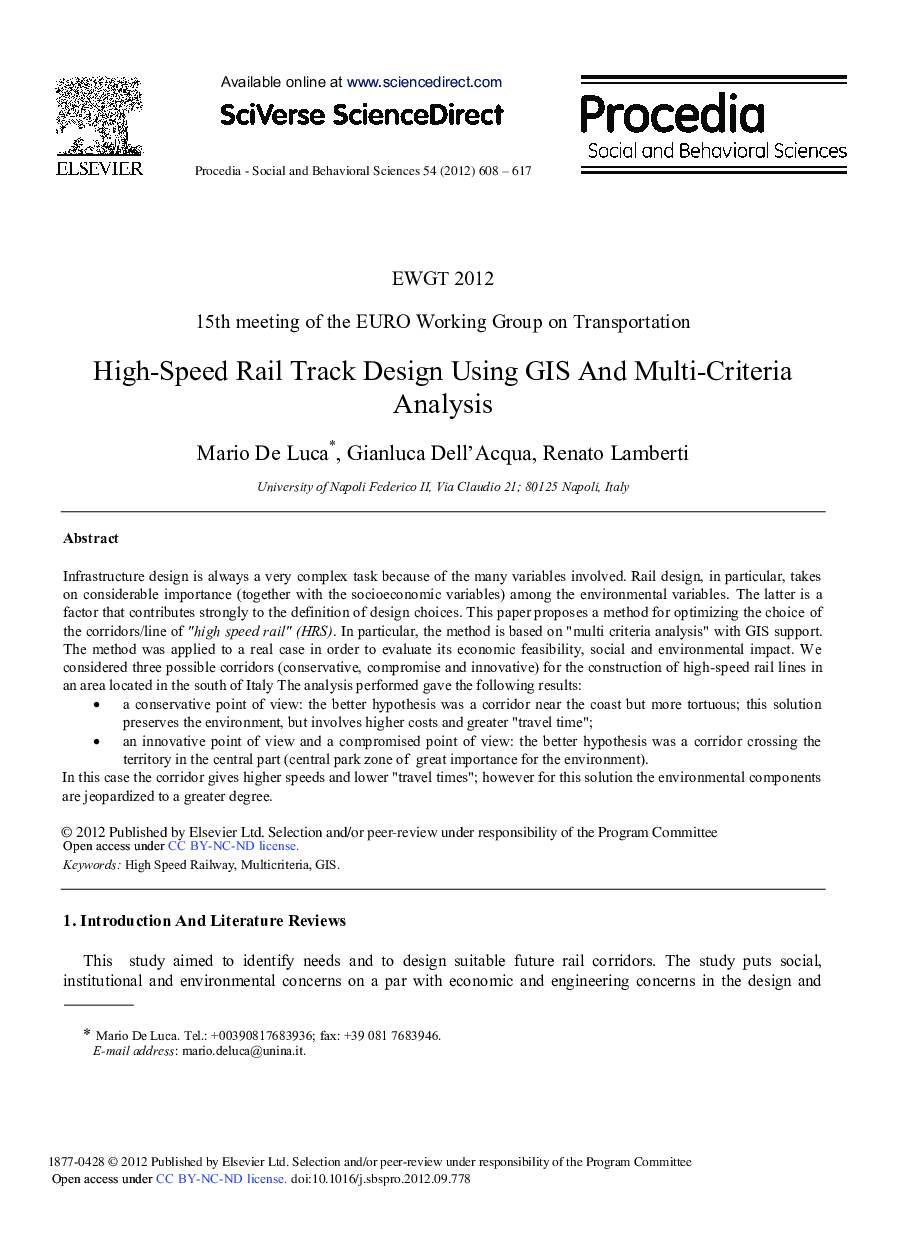| Article ID | Journal | Published Year | Pages | File Type |
|---|---|---|---|---|
| 1121397 | Procedia - Social and Behavioral Sciences | 2012 | 10 Pages |
Infrastructure design is always a very complex task because of the many variables involved. Rail design, in particular, takes on considerable importance (together with the socioeconomic variables) among the environmental variables. The latter is a factor that contributes strongly to the definition of design choices. This paper proposes a method for optimizing the choice of the corridors/line of “high speed rail” (HRS). In particular, the method is based on “multi criteria analysis” with GIS support. The method was applied to a real case in order to evaluate its economic feasibility, social and environmental impact. We considered three possible corridors (conservative, compromise and innovative) for the construction of high-speed rail lines in an area located in the south of Italy The analysis performed gave the following results:.a conservative point of view: the better hypothesis was a corridor near the coast but more tortuous; this solution preserves the environment, but involves higher costs and greater “travel time”;an innovative point of view and a compromised point of view: the better hypothesis was a corridor crossing the territory in the central part (central park zone of great importance for the environment).In this case the corridor gives higher speeds and lower “travel times”; however for this solution the environmental components are jeopardized to a greater degree.
